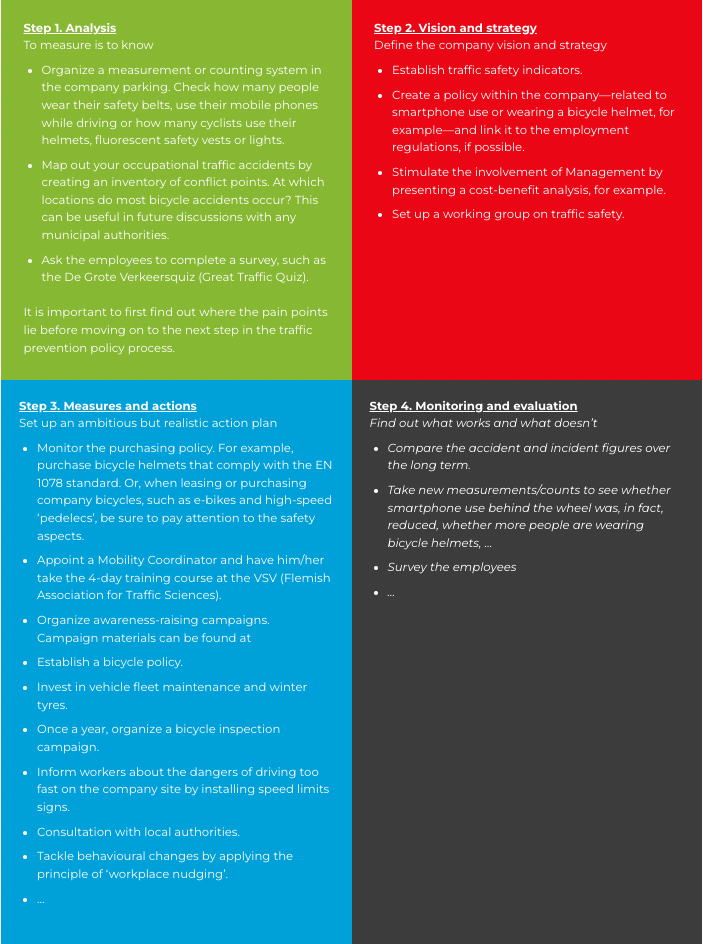Traffic prevention to avoid accidents
The total number of occupational accidents has decreased in recent years, which is positive news. However, in relation to the total numbers, the share of occupational road accidents is increasing. In 2008, they accounted for 9.7% of all work-related accidents; in 2017, they accounted for 11.5%.
With winter weather approaching, the risk of occupational accidents due to snow or sleet is on the rise. As a prevention consultant, you naturally want to prevent as many traffic accidents as possible. We'll give you tips for implementing a traffic prevention policy so you can anticipate problems and be prepared.

